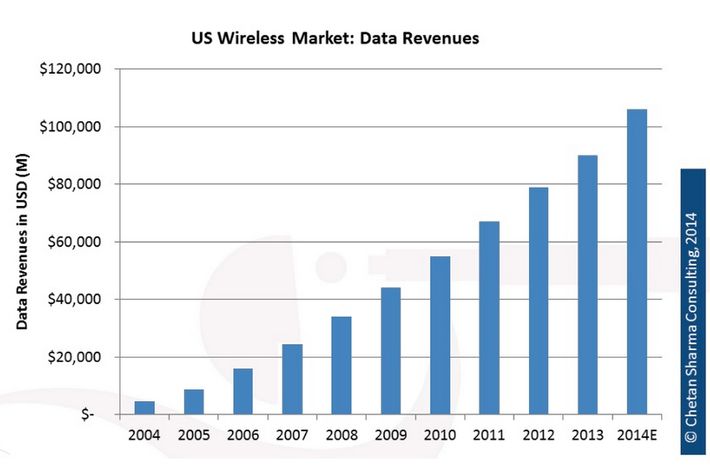
Last week, when Amazon CEO Jeff Bezos took to a Seattle stage to announce a new smartphone called the Amazon Fire, he spent an hour and a half describing feature after feature: unlimited photo storage, 24/7 video support, 13-megapixel camera, a 3-D-like “dynamic perspective” display, a visual-recognition shopping button called Firefly, and dozens more bells and whistles.
But there was one question Bezos left unanswered about his new device’s feature set. Namely: Could it, you know, make phone calls?
Several years ago, Bezos’s neglect of the Fire’s phone capabilities would have seemed like a huge, glaring omission. (Remember the raging debate over the iPhone 4’s poor reception?) But these days, smartphones are phones in name only. For many of us, the green, phone-shaped icon on our home screens has become just another minor feature – like a stopwatch or a stock ticker. And for others, it’s completely irrelevant.
“I haven’t made a phone call on my phone in a long time,” Bezos later told the Times. “But I know people still make phone calls.”
Not so much. In fact, the use of voice calls – which has been dropping since 2007, the year Apple introduced the original iPhone – has fallen off a cliff lately. As of last year, cell providers in the U.S. are now making more money per user from data use than voice calling. (The U.S. is only the seventh nation to reach the data-voice tipping point — it happened in countries like Japan as early as 2011.) A recent survey of 7,000 U.S. high-school seniors found that only 34 percent made phone calls every day — far fewer than the number who texted or used apps like Snapchat, Facebook, and Instagram. And companies like AT&T and Verizon, which saw the data boom coming years ago, have been spending more and more on new, bigger LTE data networks, while essentially giving away their voice plans for free.

In the app age, old-fashioned phone calls have become not only passé, but ominous. Today, when I get a call outside of work hours, I think: Who died? Who’s trapped on a mountain? What awful global calamity is unfolding? I use apps and text messages for everything – ordering dinner, hailing cabs, telling friends I’m running late – and I rarely check my voice mail. I don’t have any friends who regularly call me; even my parents have switched to texts.
All of which raises a question: Why are we still calling these things phones?
This isn’t just a semantic issue. It’s a marketing one. Wireless companies want us to think of our rectangular gadgets first and foremost as phones, since what their plans give us in the phone department (unlimited minutes and texting, on most carriers) is much better than what they give us in the data department (tiered caps on data use, with charges for overage). In fact, these companies make millions of dollars a year from our tendency to overestimate the number of calls we’ll make in a given month, and underestimate the amount of data we’ll use.
For example, take my case. For several years, I paid about $100 a month for a phone plan that gave me 900 minutes per month and allotted me two gigabytes of data. That suited me fine – I rarely went over my allowances – but this year, I found a “loyalty” plan from Verizon that cost only $60 a month, and had unlimited talking and texting with the same two gigabyte data cap. Great news, right?
Not exactly. Like most Americans, my data use has skyrocketed – from less than two gigabytes a month to more than five gigabytes on average – and as a result, I end up spending $30 or $40 each month on overage charges. The upshot is that I’m still paying Verizon about $100 a month to use my phone, even though I nominally have a better, cheaper plan. And if I wanted a plan with a bigger data allotment, I’d have to pay much more – in fact, at my current levels, it costs less to pay the penalties than move up a notch.
I’m not alone in my frustration; a 2013 study by Cisco estimated that, by 2017, the average North American mobile user will use six gigabytes of data per month. It’s not wrong, necessarily, for carriers to charge more for all that extra data, which taxes their networks in a way voice calls don’t. But it is opportunistic of them to encourage us to focus on the bold print in smartphone plans – the “unlimited talk and text” part – while distracting us from the more important matter of how much data we’re allowed to guzzle before we’re charged extra. (An exception among big carriers is T-Mobile, which doesn’t charge data overage fees, though it does slow down users’ data after they exceed their plans.)
Regardless of its implications on wireless carriers, it’s odd to refer to these vast, all-encompassing gadgets merely as “phones.” It would be like calling a car a “radio box,” or a microwave a “popcorn maker.” All smartphones can make calls, sure, but what makes one device different from another is how well it can do everything else.
So let’s call these devices something that more accurately reflects how we use them. One idea would be to take a cue from the British and start referring to them simply as “mobiles.” We could even call them “Handys,” as the Germans do, or “mini-tablets,” which is essentially what they are. Or we could coin another neologism, like “pocket computer.” (“Pock-comp” for short.)
All of these words sound more awkward to our unaccustomed American ears than “phone” or “cell phone.” But they’re better descriptors of what these devices are. And when we accept the fact that our iPhones are being used for apps, rather than calls, perhaps providers will be convinced to create more customer-friendly data plans. Now that would be news worth calling home about on your mobile, Handy, or pock-comp – if you can still remember how, that is.





























